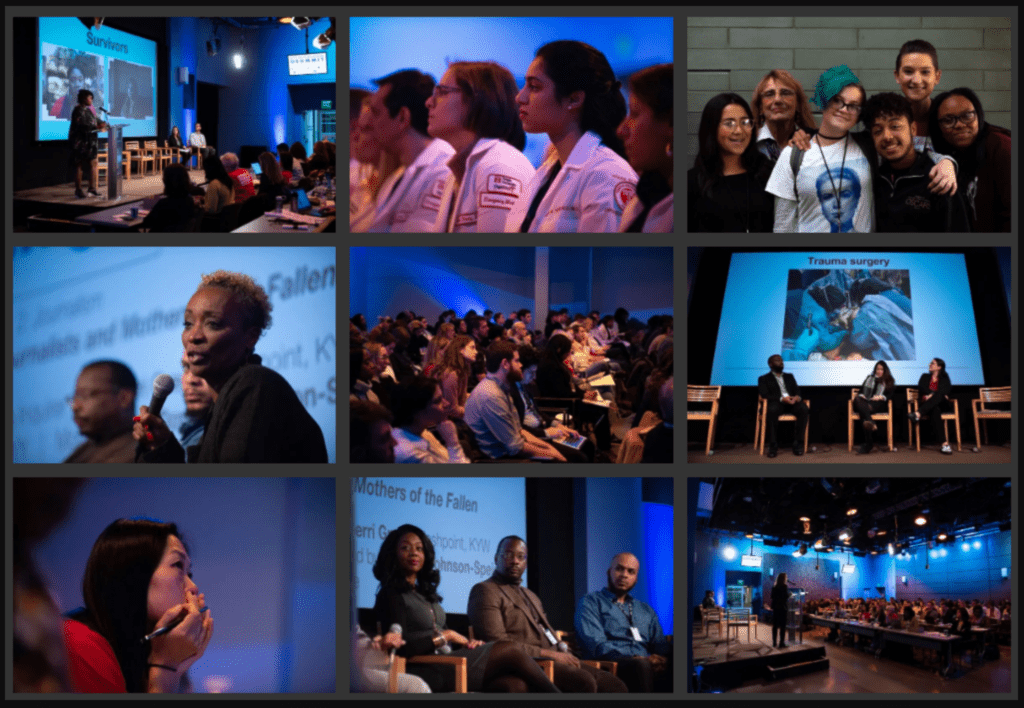
Above: Photographs from the Better Gun Violence Reporting Summit in 2019, by Kriston Jae Bethel.
Nearly five years have passed since we launched the Philadelphia Center for Gun Violence Reporting and nearly seven since we began laying the groundwork. Our first breakthrough came when nearly 250 people attended our Better Gun Violence Reporting Summit at WHYY in 2019, but we are still seeing outcomes.
Here’s how it started: During a panel that brought together local journalists with women bereaved by gun violence, Michelle Kerr-Spry shared that “We don’t know how to live when our children have been murdered… I was literally dying.”
Dr. Dorothy Johnson-Speight of Mothers in Charge followed up, asking: “Why would it take six months to find out there is a group to support her through her grief and pain? And then added: “That should have been reported in the news. That should have been in the newspaper.”
In response, several local news organizations started sharing resources when reporting on gun violence, including CBS 3 News in Philadelphia, WHYY’s Billy Penn news site and NBC 10, which shared a list from Resolve Philly.
We made our own resource page as well at first but then spent the following year working with The Trace to develop their Philadelphia gun violence info hub and sharing it on our home page: Up the Block.
We also have three past fellows on our team from the Dart Center for Journalism and Trauma at Columbia University. We teach trauma journalism during our Gun Violence Prevention Reporter Certification Workshop and and provide an introductory trauma education session with a clinical psychologist during our Survivor Connection Workshops.
So, we were exceptionally pleased last week when spotting the Gun Violence Resiliency Needs Assessment from the new Resources for Victims of Gun Violence Initiative introduced by the Pennsylvania Commission on Crime and Delinquency, and finding PCGVR on the short list of recommended resources. And we were encouraged to find the takeaways from our Summit — which was attended by at least one current PCCD leader — closely reflected in the text:
“Train journalists on trauma-informed reporting and interactions with violence-affected individuals. These efforts could inform residents about community issues and events, available resources and services when violence occurs, and could encourage readers to provide input into neighborhood issues.“ – Executive Summary
Last year, we felt similarly encouraged to find our guidance added to the Associated Press Stylebook and had been known to the team behind the Surgeon General’s Advisory on Firearm Violence.
For more information, you can download our Better Gun Violence Reporting Toolkit for free.